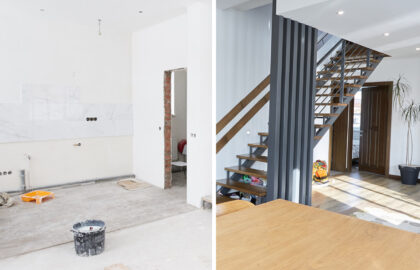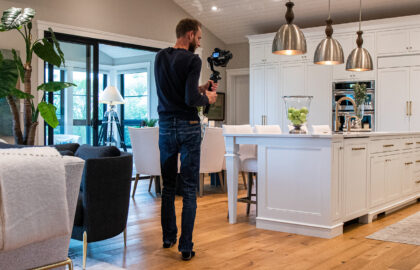
Giving your home a refreshing touch begins with giving it a fresh coat of paint. Repainting your property can not only increase its resale value, it can also enhance the overall feel of your home. New colours can invigorate and calm your mind, or energize you too!
Colours have such an impact on our moods—could be positive or negative, it’s always best to use it to your advantage. In case you’re planning on switching your home paint for the better, below are some helpful tips:
- Get the Big Picture
Start at the bottom. The first thing you need to consider is the flooring options. It could influence your colour choices for your walls, along with the textures you will use; tones, artworks, and even tiny accents for your house. Once you’re done with the flooring, you can work in contrasting or complimentary colours for your furniture, curtain, rugs, and other elements. Proceed to the top, or the ceiling. While a white ceiling is a popular choice, there really are no hard and fast rules for your ceiling colour. Darker tones make a room feel enclosed while non-white ones draw the eye up. Perhaps for your ceiling, a good tip would be to use a matte finish instead of gloss paint. - Liven Up Your Walls
If you’re using different themes for the rooms in your house, you can unify it with a single colour for your walls. If you want to pursue different wall colours though, just make sure that they match in tone. Clashing colours may not be very pleasant for your house. Skirting boards, on the other hand, are best painted with enamel paint for better durability. - Colour Scheme for the Outside
The three colour rule dictates that you never use more than three colours for your house’s exterior. It should be one colour for the walls, one for the trim, and one for the accents. These colours should compliment each other while matching tonally. While some people think that beige is boring, using neutral colours for your home exterior is a good idea. Apart from being able to blend well with the streetscape, it also looks stunning when used with the fitting colour combination. Another suggestion would be to use a colour scheme for your exterior that matches the era and architecture of your house. It should also give your home that statement of character and history as well. - Consider Space and Sizes
With the power of design and decorations, you can make small spaces look bigger with lighter colours on the wall and the ceilings; however, if you’re a fan of dark colours, you can paint one wall with a dark colour and use much lighter shade of the same colour on the rest of the walls. On the other hand, white paint makes room feel more airy, light, and clean. There are many different tones of white though, for instance, there is bluish arctic white to yellow tinged cream. In case you doubt which one is best for your walls, try the pure white one instead. This colour matches every design and accent, as much as it is easy to repaint later on. - Bring the Outdoors To You
Incorporating nature’s colours into your interior designs is always a good idea. From the blue of a pool to the green of hedge; using nature’s colours for your home is always a win-win. While aiming for a simple, neat, clean feel to your home is your goal; make sure you add drama to your space with an artwork, brightly coloured knick-knacks or textured rugs. You may also introduce some cool colours such as greens and blues, as a subtle feature to your home. Monochromatic palette also adds a stylish look to your home. From warm greys to charcoals, it’s almost always a guarantee of looking good. Deep reds, burnt oranges, and muted yellows also add some welcoming tones to your living rooms. You may save the darker tones at this point for the structural elements in your house such as staircases and cupboards. Pastel colours, on the other hand, promote a more relaxing atmosphere, a popular option for bathrooms and bedrooms. - lay with Textures
Textures should be your finishing touches to your house. Today’s trends dictate metallic, suede, and silky paints. These hues provide tactile effects with minimal fuss. If you have kids in the house and would want to have a spot for fostering their art, feature blackboard paint on one of your walls. You kids can draw up their masterpieces using coloured chalks that can be wiped off so your kids can do it again! When it comes to repainting, and retouching your home, trusting your instinct and going for your heart’s desire should lead you to the way that’s best in decorating your house—turning it into a place you can call home.







